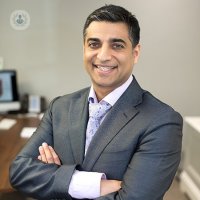What is Mohs surgery and what is the procedure?
Written by:Mohs surgery (named after Frederick Mohs 1910-2002) is the gold standard method for treating several skin cancers. It involves testing the skin cancer at the same time that it’s removed, to determine if it has been adequately removed. The main advantages are that the surgical wound matches the size, shape and depth of the cancer, so that no tissue is removed unnecessarily.

What is the procedure?
In most cases, Mohs surgery is performed under local anaesthetic as a daycase, meaning you are awake and can go home the same day. After the anaesthetic is injected, the affected skin can be cut out and sent for laboratory testing. While you wait for the results, a dressing is placed over the wound and typically you would be allowed to eat, drink, read etc. Once the results are available, you may be brought back into the operating room to remove more cancer - this happens repeatedly until the area has been cleared of skin cancer. Subsequently, the wound can be repaired by stitching, a skin graft or flap, or simply allowed to heal by itself with a dressing.
The recovery
In most cases, patients can go directly home after Mohs surgery. Any stitches are typically removed seven days later but this can vary. However, there may be some bruising and swelling, and you may have sports and strenuous activites restricted for a few days. Mohs surgery is highly successful and in many studies has been shown to reduce the chance of cancers returning after surgery. It is used for basal cell carcinoma, squamous cell carcinoma, lentigo maligna and other rare skin cancers. If you have any worries regarding skin cancer, see a dermatologist.


